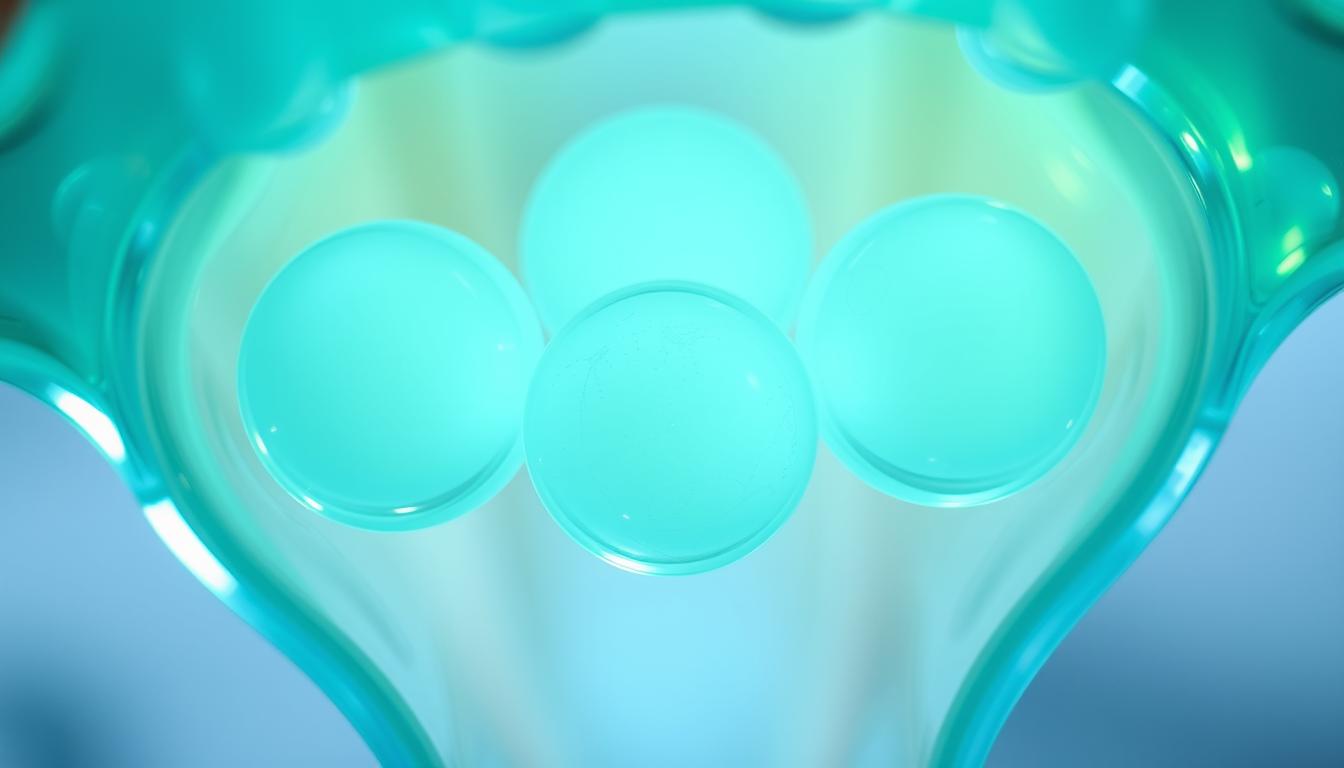A medical breakthrough in 2012 transformed fertility preservation forever. That year, leading reproductive organizations reclassified egg freezing from experimental to mainstream medicine. This shift opened new doors for those seeking control over their biological timelines.
Modern techniques now achieve astonishing results. The vitrification method preserves cellular integrity with 90-97% survival rates post-thaw. Advanced cryopreservation prevents ice crystal formation – a game-changer compared to older freezing methods.
Clinical outcomes continue to impress medical professionals. For women under 38, live birth rates reach up to 12% per preserved egg. These numbers reflect rigorous research involving thousands of successful pregnancies nationwide.
Key Takeaways
- Medical authorities recognized egg freezing as standard practice in 2012
- Vitrification achieves over 90% egg survival during thawing
- Live birth success rates reach 12% for women under 38
- Fertility preservation combines hormonal therapy with advanced cryogenics
- Reproductive planning now accommodates diverse life circumstances
This technology empowers individuals to make proactive choices about family planning. From cancer patients to career-focused professionals, modern fertility solutions adapt to various needs. Ongoing studies continue refining protocols for even better outcomes.
Introduction to Egg Freezing and Its Growing Importance
Changing social dynamics have made fertility preservation a critical consideration for many. Over 40% of college-educated women now prioritize career development before starting families, according to Pew Research data. This shift aligns with rising marriage ages – averaging 30+ in major U.S. cities.

Understanding the Need for Fertility Preservation
Medical advancements now support diverse life paths. “Egg freezing provides biological insurance for those navigating life’s uncertainties,” explains Dr. Lauren Thompson, a Yale reproductive specialist. Common motivations include:
| Factor | Percentage | Primary Concern |
|---|---|---|
| Career Development | 62% | Timing conflicts |
| Partner Selection | 58% | Relationship readiness |
| Financial Stability | 71% | Childcare costs |
Why Delaying Motherhood Is Becoming More Common
Educational pursuits now extend into later years, with 33% of graduate students aged 30+. Workplace demands and housing costs further complicate family planning timelines. Cryopreservation offers strategic solutions for these modern challenges.
Psychological studies reveal 68% of patients report reduced anxiety after preserving eggs. This option empowers informed decisions rather than rushed choices. As societal expectations evolve, reproductive technology adapts to support varied life journeys.
The Science Behind Freezing Eggs
Modern fertility preservation relies on groundbreaking cellular stabilization methods. Specialized cryoprotectant solutions replace cellular water during treatment, protecting delicate structures from temperature extremes.

How Flash-Freezing Revolutionized Cell Preservation
Vitrification’s ultrarapid cooling achieves temperatures below -150°C in seconds. This technique prevents ice crystals that damaged cells in older freezing approaches. Laboratories maintain preserved specimens at -196°C using liquid nitrogen storage systems.
Comparing Reproductive Material Preservation Options
Embryo cryopreservation shows 95% survival rates compared to 90% for vitrified specimens. However, unfertilized preservation offers greater flexibility for future partner selection. Key distinctions include:
- Embryos require sperm commitment before preservation
- Vitrified specimens avoid fertilization timing constraints
- Storage protocols differ in monitoring requirements
Advanced cryogenic techniques continue evolving, with new research optimizing thawing protocols. These innovations maintain cellular viability while accommodating diverse family-building timelines.
Can You Freeze Eggs? The Science Says…

Decades of fertility research confirm cryopreservation effectively preserves reproductive potential. Dr. Pardis Hosseinzadeh of Johns Hopkins reveals cellular quality plummets after 37, with 90% becoming nonviable by 43. This biological clock dictates why specialists recommend preservation before 40 for optimal results.
Pregnancy probabilities per preserved specimen range from 4% to 12% based on age and health factors. Younger individuals typically see higher success rates due to better chromosomal integrity. Clinical data shows multiple specimens often prove necessary for viable conception attempts.
Modern techniques evolved significantly since the first successful birth using frozen material in 1986. Today’s flash-freezing methods maintain structural integrity better than early slow-cooling approaches. Laboratories now achieve over 90% survival rates during thawing processes.
Key considerations for preservation timing:
- Ideal window: Late 20s to mid-30s
- Rapid quality decline begins at 37
- Multiple cycles may improve success odds
Reproductive specialists emphasize individualized assessments. Hormonal testing and ovarian reserve evaluations help determine optimal strategies. While not an absolute guarantee, cryopreservation provides valuable options for future family planning.
Who is a Good Candidate for Egg Freezing
Fertility preservation decisions hinge on biological and medical factors that vary by individual. Specialists use comprehensive evaluations to determine suitability, balancing reproductive potential with personal circumstances.

Evaluating Age and Fertility Factors
Age remains the strongest predictor of successful outcomes. Optimal results typically occur when preservation happens between 30-34 years. After 37, egg quality declines sharply, though some clinics accept candidates up to 42 with adjusted expectations.
| Age Range | Egg Survival Rate | Recommended Specimens |
|---|---|---|
| 25-29 | 94% | 10-15 |
| 30-34 | 91% | 15-20 |
| 35-37 | 88% | 20-25 |
| 38+ | 82% | 25+ |
Medical Considerations and Indications
Several health conditions make fertility preservation critical:
- Upcoming chemotherapy/radiation for cancer
- Endometriosis threatening ovarian function
- Autoimmune diseases requiring gonadotoxic treatments
- Genetic risks like BRCA mutations
Reproductive specialists conduct anti-Müllerian hormone tests and ultrasound scans to assess ovarian reserves. Time-sensitive cases, particularly cancer diagnoses, often require coordinated care between oncologists and fertility teams.
Detailed Egg Freezing Process and Procedures
Modern fertility preservation combines advanced technology with personalized care. This phased approach requires precise coordination between patients and medical teams, typically spanning two weeks from start to finish.
Ovarian Stimulation and Hormonal Treatments
The first phase involves daily hormone injections for 10-12 days. You’ll self-administer follicle-stimulating hormone (FSH) and luteinizing hormone (LH) to encourage multiple ovaries to produce viable specimens. Monitoring occurs through:
- 4-6 pelvic ultrasounds
- Frequent blood tests
- Dosage adjustments based on response
A final trigger shot (hCG) initiates maturation 36 hours before retrieval. Timing proves critical – too early or late reduces viable specimen counts.

Egg Retrieval and the Vitrification Process
The outpatient procedure takes 20-30 minutes under mild anesthesia. Using transvaginal ultrasound guidance, specialists collect mature specimens through a thin needle. Most patients resume normal activities within 24 hours.
Embryologists immediately assess specimen quality before flash-freezing. The vitrification process replaces cellular fluid with cryoprotectants, then rapidly cools material to -196°C. This prevents ice crystal formation that could damage cellular structures.
Post-retrieval care includes hydration and rest. Some experience mild cramping or bloating, though serious complications remain rare. Preserved specimens enter secure storage until needed for future use.
Understanding the Costs and Financial Considerations
Financial planning becomes a crucial component when considering fertility preservation options. Initial expenses typically range from $5,000 to $10,000 per cycle, covering hormonal medications, monitoring appointments, and retrieval procedures. Many clinics bundle these services, though additional fees for genetic testing or anesthesia may apply separately.
Breakdown of Medications, Procedures, and Storage Fees
Your investment extends beyond the initial cycle. Annual storage charges of $300-$500 add up significantly over decades – a critical factor often overlooked. Unlike some medical treatments, most insurance plans exclude elective preservation, though 17 states mandate coverage for cancer-related fertility protection.
Payment strategies vary by clinic. Some offer discounted multi-cycle packages or interest-free plans. Nonprofit grants like Livestrong Foundation assistance help cancer patients offset expenses. When budgeting, remember future IVF costs averaging $12,000-$15,000 per transfer attempt.
| Expense Category | Average Cost | Coverage Availability |
|---|---|---|
| Medications | $2,000-$5,000 | Partial (varies by plan) |
| Retrieval Procedure | $6,000-$8,000 | Rarely covered |
| Annual Storage | $300-$500 | Self-pay |
Smart financial planning involves consulting specialists about hidden fees and long-term commitments. Some clinics provide cost calculators to estimate total expenses based on your preservation timeline and goals.
Risks, Side Effects, and Safety Concerns
Balancing treatment benefits with potential risks remains essential for informed fertility decisions. Modern protocols prioritize safety while managing biological responses to preservation techniques.
Temporary Reactions During Treatment
Hormonal medications often trigger mild effects like hot flashes or mood changes. These typically resolve within weeks after completing stimulation. Post-retrieval discomfort might include abdominal pressure or temporary bloating.
Less than 5% develop ovarian hyperstimulation syndrome (OHSS). Severe cases requiring hospitalization affect 0.1-2% of patients. Careful monitoring helps mitigate these risks through adjusted medication dosages.
Enduring Outcomes and Health Implications
Research tracking frozen eggs shows comparable birth outcomes to fresh specimens. No increased pregnancy complications appear in long-term studies. Structural damage risks during retrieval stay below 1% with skilled practitioners.
Success rate consistency depends on preservation age and laboratory expertise. While freezing doesn’t guarantee future conception, it provides viable options when timed appropriately. Regular follow-ups help address any concerns about stored specimens.



